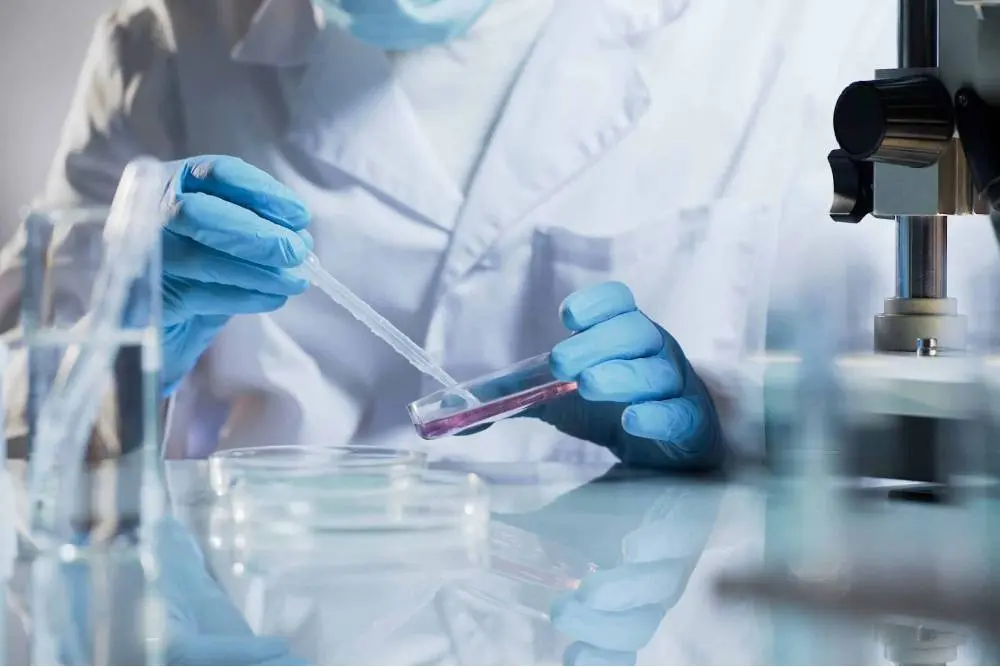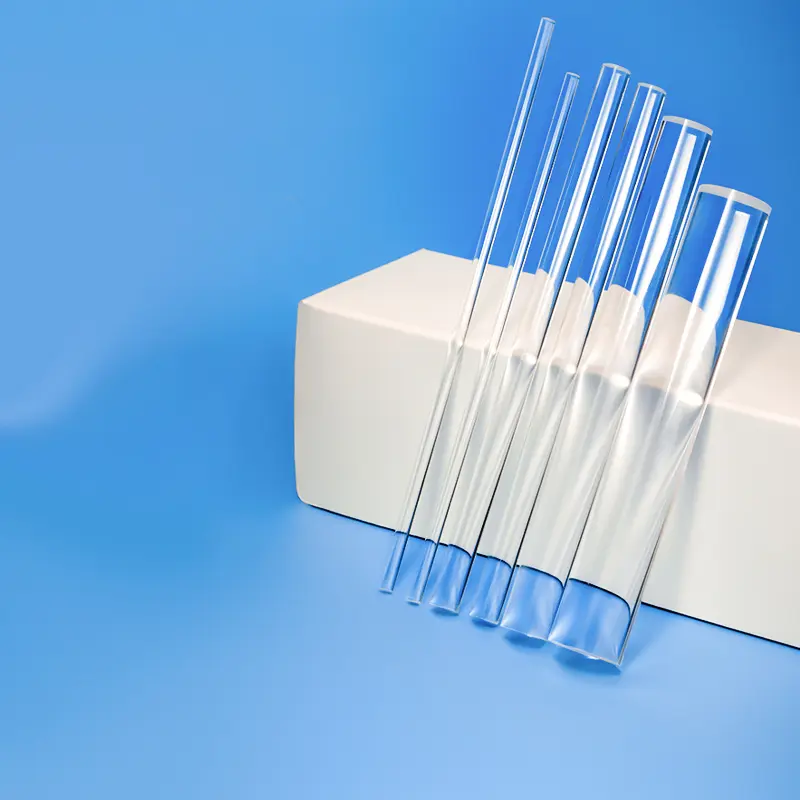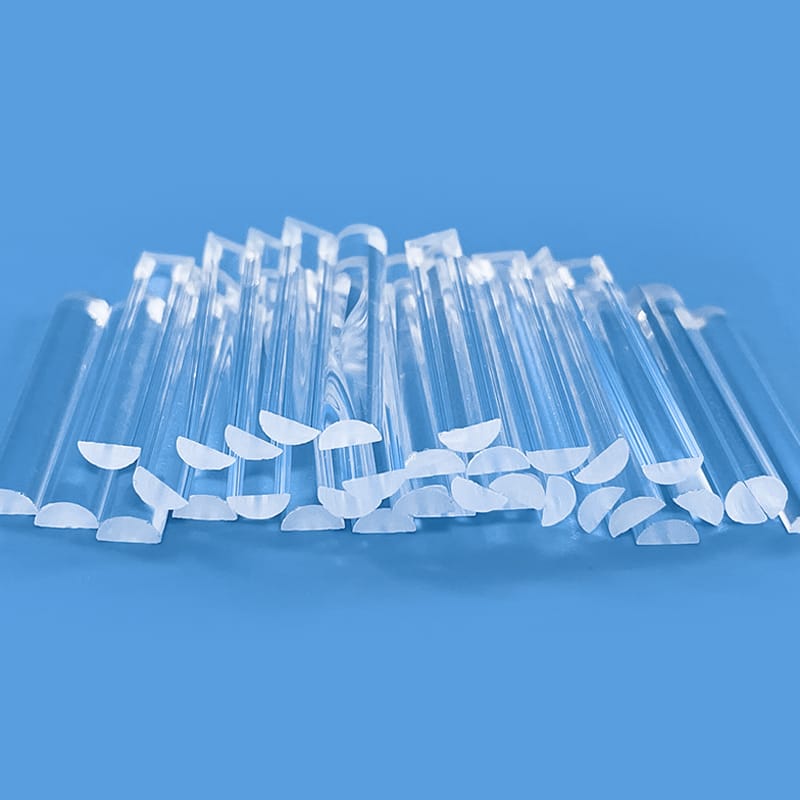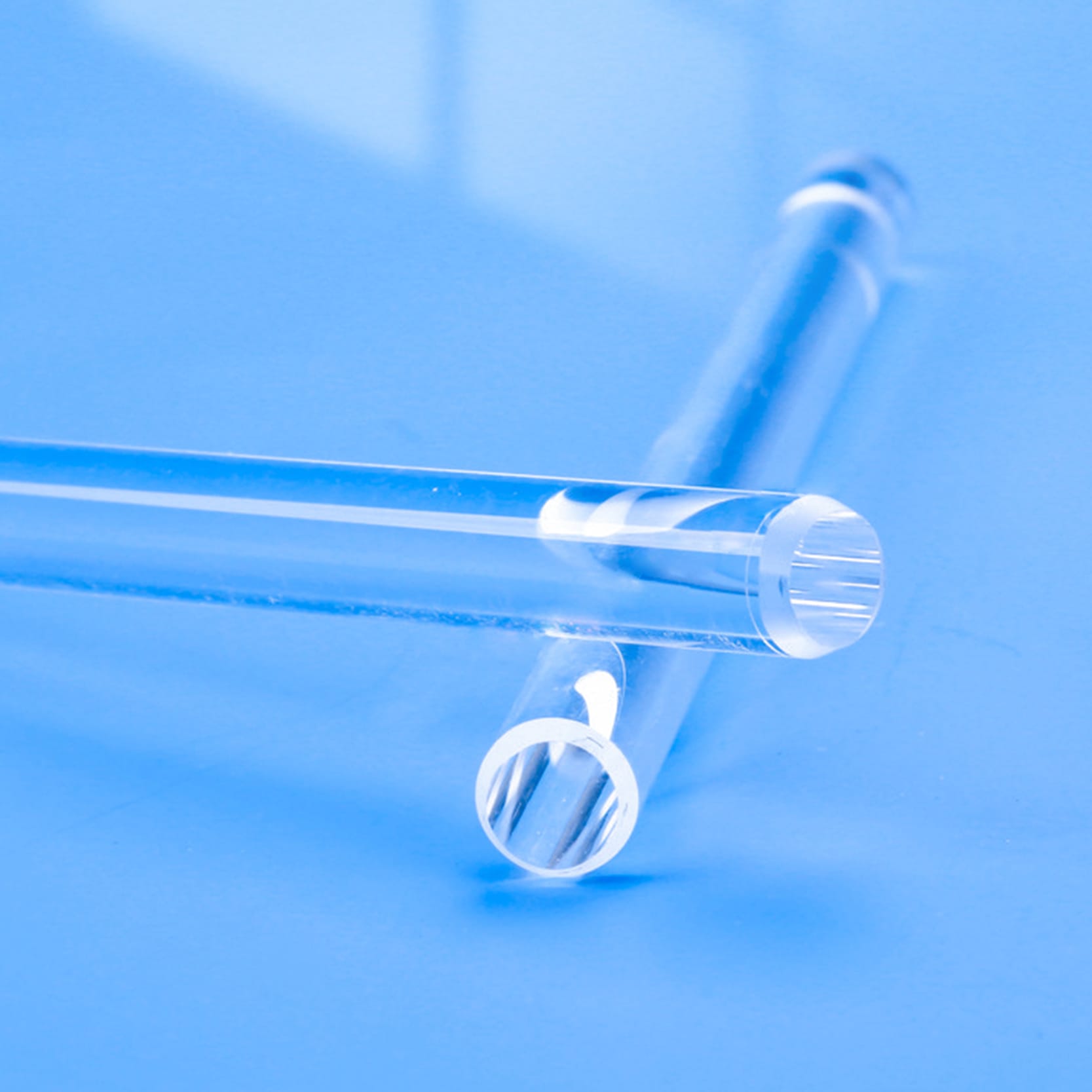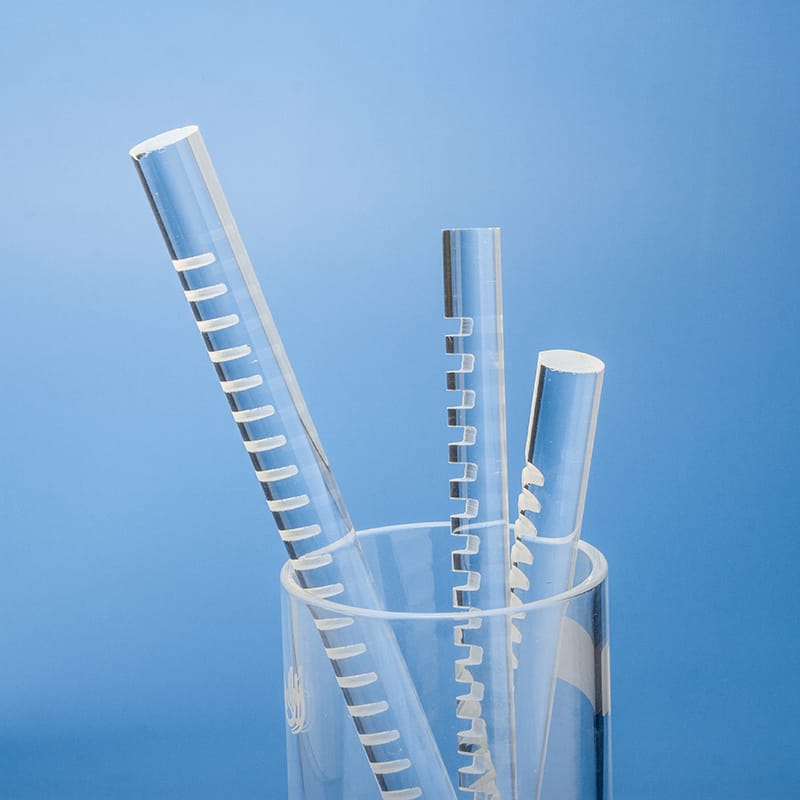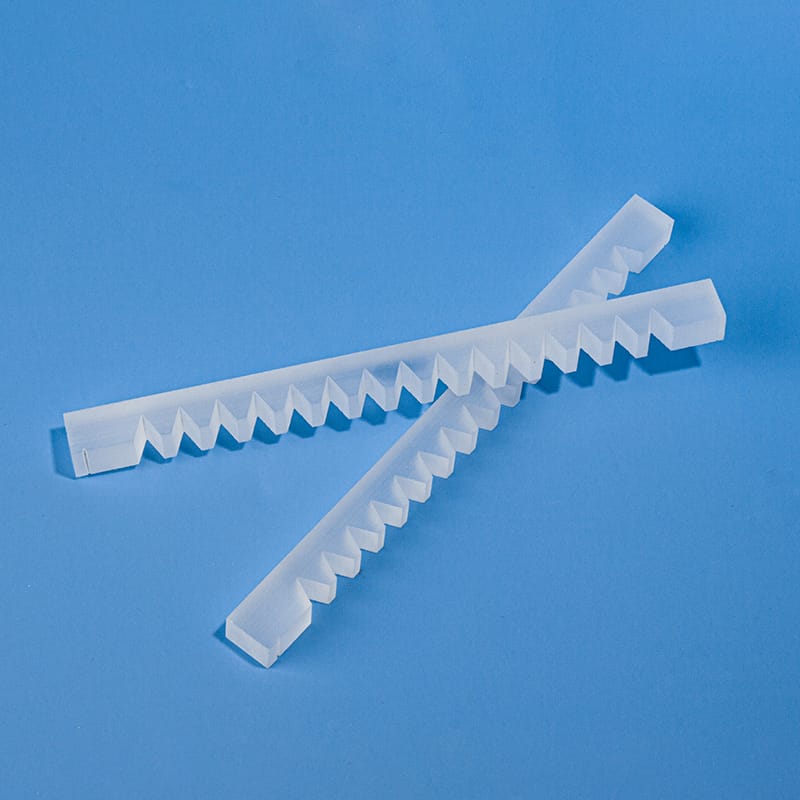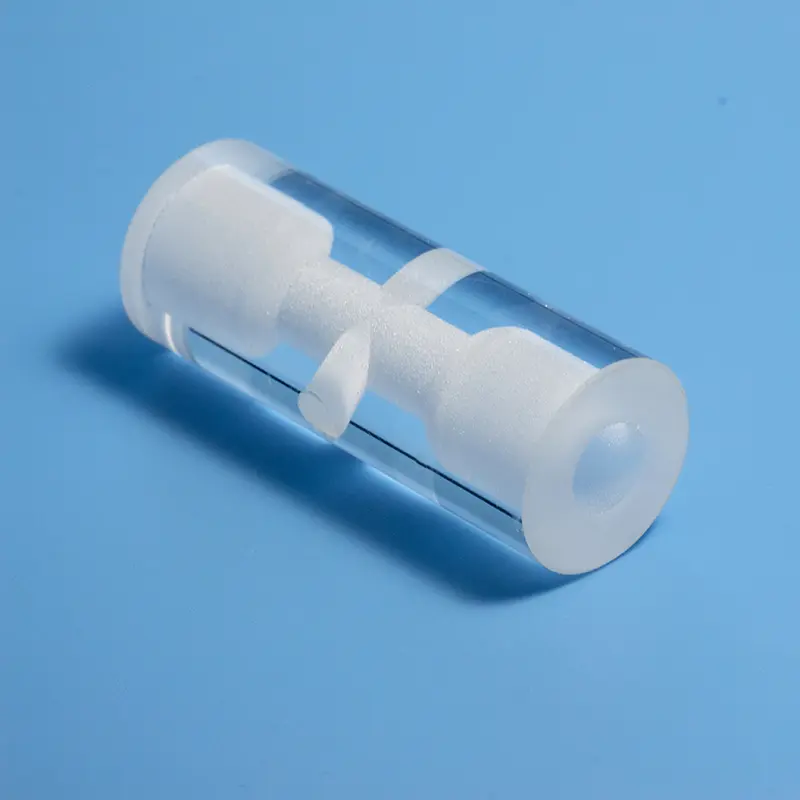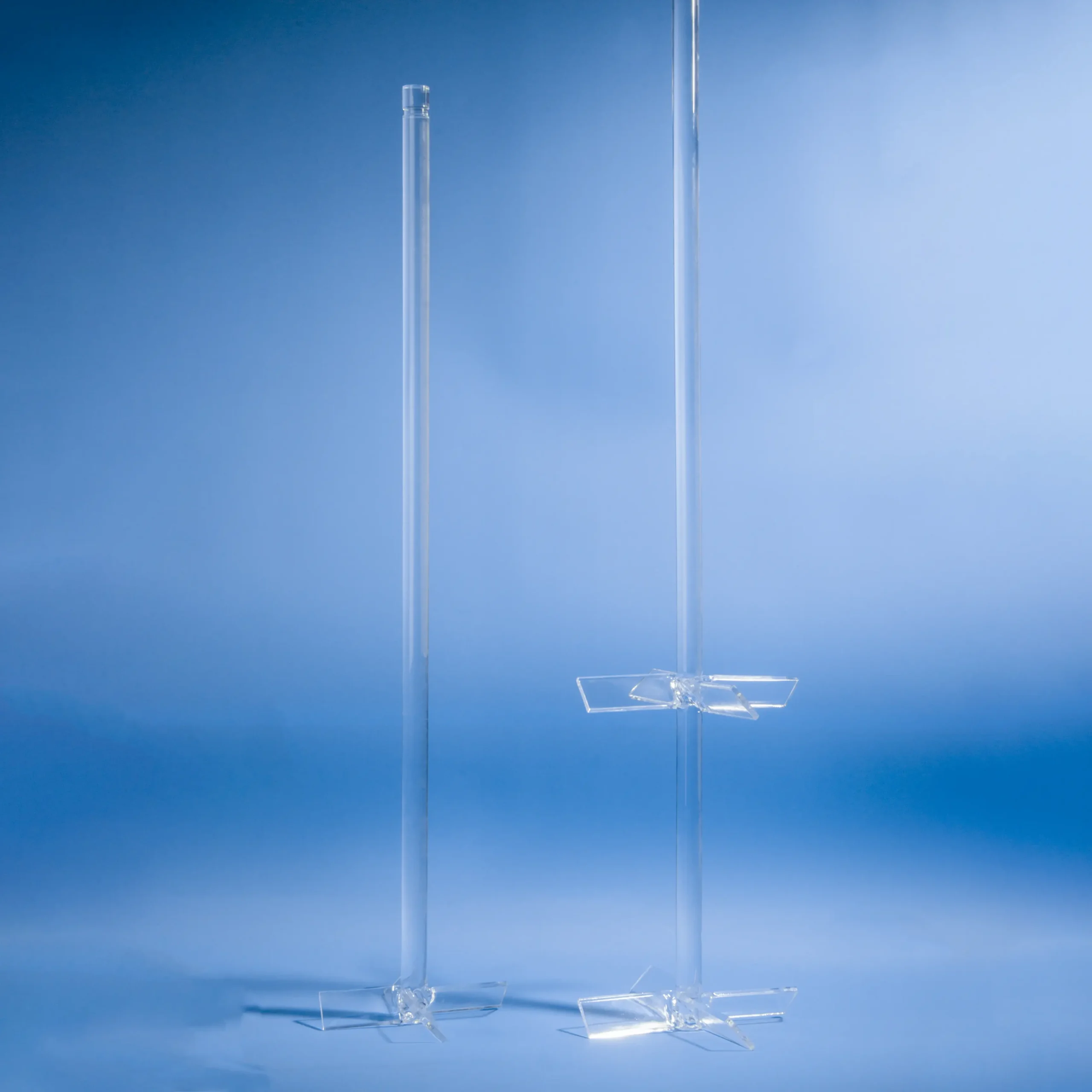Unsere hochreinen Quarz-Mischstäbe und geschmolzenen Siliziumdioxid-Rührwerke sind für anspruchsvolle Anwendungen konzipiert, die eine überlegene Chemikalienbeständigkeit und hohe Temperaturstabilität erfordern. Ideal für Labore, chemische Verarbeitung und Halbleiterindustrien gewährleisten diese Stäbe eine kontaminationsfreie Mischung von ätzenden Flüssigkeiten und hochreinen Substanzen. Individuelle Abmessungen und Designs sind erhältlich, um Ihre spezifischen Mischbedürfnisse zu erfüllen.
| Durchmesser | Länge |
|---|---|
| 10mm | 300mm |
| 10mm | 600mm |
| 12mm | 300mm |
| 12mm | 600mm |
| 14mm | 300mm |
| 14mm | 600mm |
| 15mm | 300mm |
| 15mm | 600mm |
| 15mm | 1000mm |
| 16mm | 300mm |
| 16mm | 600mm |
| 16mm | 1000mm |
| 16mm | 1200mm |
| 18mm | 300mm |
| 18mm | 600mm |
| 18mm | 1000mm |
| 18mm | 1200mm |
| 20mm | 300mm |
| 20mm | 600mm |
| 20mm | 1000mm |
| 20mm | 1200mm |
| 22mm | 300mm |
| 22mm | 600mm |
| 22mm | 1000mm |
| 22mm | 1200mm |
| 25mm | 300mm |
| 25mm | 600mm |
| 25mm | 1000mm |
| 25mm | 1200mm |
| 28mm | 300mm |
| 28mm | 600mm |
| 28mm | 1000mm |
| 28mm | 1200mm |
| 30mm | 300mm |
| 30mm | 600mm |
| 30mm | 1000mm |
| 30mm | 1200mm |
| 32mm | 300mm |
| 32mm | 600mm |
| 32mm | 1000mm |
| 32mm | 1200mm |
| 35mm | 300mm |
| 35mm | 600mm |
| 35mm | 1000mm |
| 35mm | 1200mm |
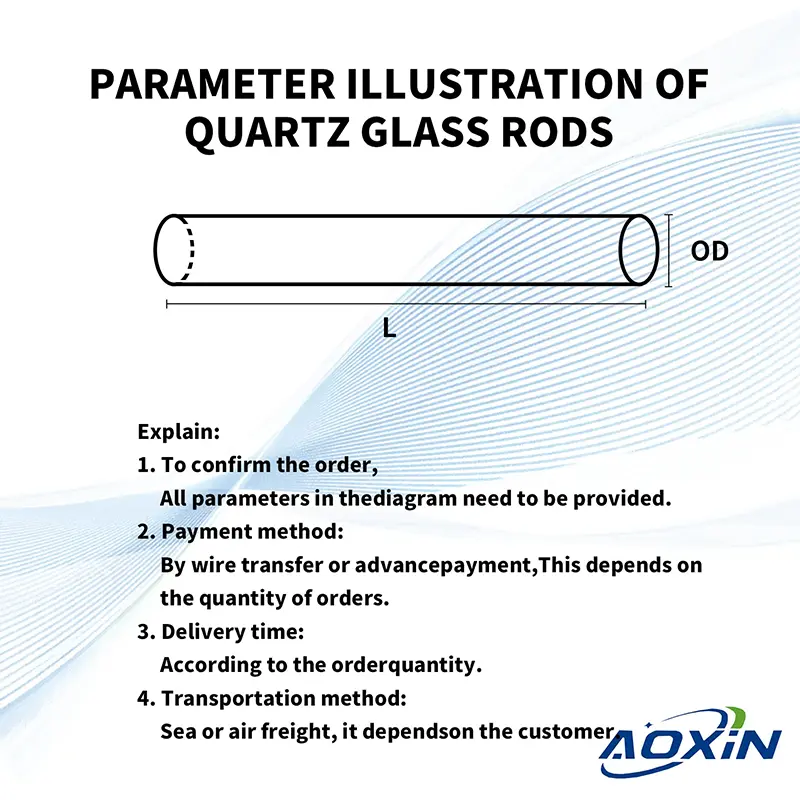
Anmerkungen:
注文を確認するために
Folgende Parameter sind erforderlich:
① Außendurchmesser ② Länge ③ Menge
- Zahlungsmethode:
Per Überweisung oder Vorauszahlung
Es hängt von der Bestellmenge ab. - Delivery time:
According to the order quantity. - Versandmethode:
Per See oder Luft
Es hängt vom Kunden ab.
| Eigenschaftsinhalt | Eigenschaftswerte |
|---|---|
| SiO2 | 99.99% |
| Dichte | 2,2×10³ kg/cm³ |
| Härte | Mohs-Härte 5,5 - 6,5; Knoop-Härte 570 (bei 100 g Prüflast) |
| Zugfestigkeit | 4,8 × 10⁷ Pa (48 N/mm² bzw. 48 MPa); 7.000 psi |
| Druckfestigkeit | >1.1×10⁹ Pa (160,000 psi) |
| Wärmeausdehnungskoeffizient | 5.5×10⁻⁷ cm/cm·°C (20°C-320°C) |
| Wärmeleitfähigkeit | 1,4 W/m-°C |
| Spezifische Wärme | 670 J/kg-°C |
| Erweichungspunkt | 1730°C (3146°F) |
| Transformationspunkt | 1210°C (2210°F) |
| Spannungspunkt | 1120°C (2048°F) |
| Arbeitstemperatur | 1200°C (2192°F) |
| Elektrischer Widerstand | 7×10⁷ Ohm cm (350°C) |
| Größe | Kundenspezifisch |
| Logo | Personalisierung mit Logo |
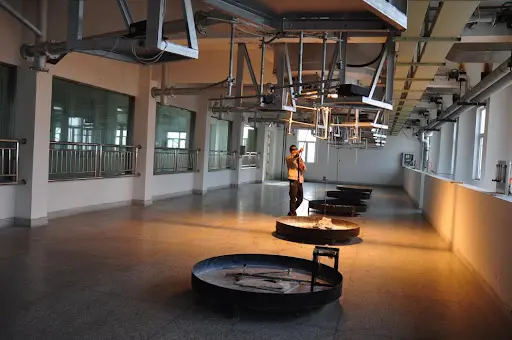
Es gibt zwei Hauptmethoden zur Herstellung von Quarzstäben: das kontinuierliche Verfahren und das Flammenfusionsverfahren (auch bekannt als Gasfusionsverfahren).
Kontinuierliches Verfahren: In dieser Methode wird Quarzsand von oben in einen Ofen eingespeist, der aus einem metallischen Quarz-Krug besteht, der von elektrischen Heizelementen umgeben ist. Der Quarzsand schmilzt bei hohen Temperaturen. Das geschmolzene Material passiert dann eine Formöffnung am Boden des Krugs, wodurch Stäbe, Rohre, Platten oder andere spezifizierte Produktformen erzeugt werden.
Flammenfusionsmethode: Dieses Verfahren beinhaltet die Verwendung von Wasserstoff und Sauerstoff, um farblosen Quarzkristall zu schmelzen. Das geschmolzene Material wird durch das Schmelzen und Erstarren von Kristallpartikeln in der Flamme zu Quarzglas geformt. Das Quarzglas wird dann auf verschiedene Weisen aus der Flamme entfernt und zu Quarzstäben der gewünschten Form verarbeitet.
Hohe Hitzebeständigkeit
Quarzmaterial zeigt eine herausragende Wärmebeständigkeit und ermöglicht den Einsatz in verschiedenen Temperaturumgebungen, einschließlich Hochtemperaturkochen oder experimentellen Bedingungen.
Härte und Haltbarkeit
Die Härte von Quarz macht es widerstandsfähig gegen Abnutzung und schützt effektiv die ursprüngliche Form und Textur der Materialien, während die Lebensdauer des Rührstabs verlängert wird.
Gute Lichtdurchlässigkeit
Quarz-Rührstäbe haben typischerweise eine gute Lichtdurchlässigkeit, was es erleichtert, Änderungen der Zutaten während des Rührprozesses zu beobachten.
Vielfältige Designs
Der Aufbau eines Quarzquirls umfasst in der Regel den Quirlkörper, den Kopf und den Verbindungssteg. Die Köpfe sind in verschiedenen Formen, wie z. B. Platten oder Kegel, gestaltet, um unterschiedlichen Rührbedürfnissen gerecht zu werden. Verbindungsstege sind normalerweise mit Einstellknöpfen ausgestattet, um die Länge des Quirls einfach anzupassen.
Anwendungsszenario
Chemische Experimente
In chemischen Experimenten werden Quarz-Rührstäbe häufig verwendet, um Lösungen zu rühren und Reagenzien zu mischen, um Einheitlichkeit und Genauigkeit während des gesamten experimentellen Prozesses zu gewährleisten. Ihre hohe Temperaturbeständigkeit und Korrosionsbeständigkeit machen sie besonders geeignet für Experimente, die hohe Temperaturen oder stark korrosive Reagenzien erfordern.
Biologische Experimente
In biologischen Experimenten können Quarz-Rührstäbe in der Zellkultur, bei Enzymreaktionen und anderen Prozessen verwendet werden, um eine stabile Rührumgebung zu bieten. Ihre ungiftigen und nicht kontaminierenden Eigenschaften gewährleisten die Genauigkeit und Zuverlässigkeit der Testergebnisse.
Pharmazeutisches Feld
Im pharmazeutischen Bereich werden Quarz-Rührstäbe in der Arzneimittel-Synthese und -Herstellung eingesetzt, um die Reinheit und Qualität von Medikamenten zu gewährleisten. Ihre hohe Reinheit und Korrosionsbeständigkeit machen sie zu unverzichtbaren Werkzeugen in der Pharmaindustrie.
Quarz-Rührstäbe bieten mehrere Vorteile gegenüber Kunststoff-Rührstäben, einschließlich höherer Temperaturbeständigkeit, größerer chemischer Stabilität, überlegener struktureller Festigkeit, reduziertes Bruchsrisiko und längere Lebensdauer.
Quarz-Rührstäbe eignen sich für die folgenden experimentellen Umgebungen:
Hochtemperaturumgebungen: Quarz-Rührstäbe können über längere Zeiträume bei Temperaturen von bis zu 1100 °C verwendet werden und kurzfristig bei Temperaturen von bis zu 1730 °C, was sie ideal für Hochtemperatur-Heizexperimente macht.
Chemisch anspruchsvolle Umgebungen: Quartz-Rührstäbe weisen eine hervorragende chemische Stabilität auf und reagieren mit Säuren oder Basen fast nicht, mit Ausnahme von Flusssäure und heißer Phosphorsäure. Dies macht sie für den Einsatz in korrosiven Heizanwendungen geeignet.
Quarz-Rührstäbe zeigen eine hervorragende Stabilität bei Hochtemperaturversuchen und verformen sich nicht leicht. Quarzglas hat einen niedrigen Wärmeausdehnungskoeffizienten, der es ihm ermöglicht, plötzlichen Temperaturänderungen zu widerstehen, ohne zu zerbrechen. Selbst wenn Quarzglas auf etwa 1100 °C erhitzt und dann in Raumtemperaturwasser gelegt wird, bricht es nicht. Darüber hinaus verfügen Quarz-Rührstäbe über eine hohe Hitzebeständigkeit, mit einer kurzzeitigen Einsatztemperatur von bis zu 1300 °C und einer langfristigen Einsatztemperatur von 1100 °C.
Häufig gestellte Fragen
Wir sind auf die durchgängige Fertigung von hochreinen Quarzglaskomponenten spezialisiert. Unsere Kernproduktlinien umfassen:
Quarzrohre & -stäbe: Eine große Auswahl an Durchmessern und Spezifikationen.
Quarzplatten & -scheiben: Präzisionsgeschnitten und poliert für optische und industrielle Anwendungen.
Quarzlaborglas: Ein komplettes Sortiment an Standard- und kundenspezifischen Glasgeräten, einschließlich Bechergläsern, Kolben und Booten.
Halbleiterquarz: Hochreine Komponenten wie Prozessrohre und Träger für die Halbleiterfertigung.
Kundenspezifische Fertigungskomponenten: Wir können komplexe Teile nach Ihren einzigartigen Designs und Spezifikationen fertigen.
Ja. Kundenspezifische Fertigung ist das Herzstück unseres Geschäfts. Mit über einem Jahrzehnt spezialisierter Erfahrung arbeiten wir eng mit Unternehmen zusammen, um erstklassige OEM/ODM-Dienstleistungen anzubieten. Unsere Kompetenzen umfassen Schweißen, Schleifen, Bohren, Polieren, Biegen und weitere Präzisionsbearbeitungstechniken, um Komponenten zu fertigen, die exakt Ihren Anforderungen entsprechen.
Qualität ist in unserem Herstellungsprozess von größter Bedeutung. Wir sind ein ISO 9001:2015 zertifizierter Hersteller, der sicherstellt, dass unsere Prozesse internationale Qualitätsmanagementstandards erfüllen.Unsere Produkte durchlaufen zudem rigorose SGS-Prüfungen hinsichtlich Reinheit und Leistung. Wir verwenden hochreine Rohmaterialien (bis zu 99,998% SiO2), um Quarzglas- und Kieselglasprodukte mit außergewöhnlicher thermischer Stabilität, hoher Temperaturbeständigkeit und chemischer Inertheit herzustellen.
Wir haben unsere Prozesse maximal effizient gestaltet:
Senden Sie Ihre Angebotsanfrage (RFQ): Senden Sie uns Ihre technischen Zeichnungen, Spezifikationen und Anforderungen über unser Kontaktformular auf der Website oder per E-Mail.
Schnelle Reaktion: Sie können eine erste Antwort innerhalb weniger Minuten und eine detaillierte Kommunikation innerhalb einer halben Stunde erwarten.
Design & Angebot: Wir liefern Ihnen innerhalb von 24 Stunden einen detaillierten Designvorschlag und ein wettbewerbsfähiges Angebot.
Prototypenentwicklung & Produktion: Nach Freigabe gehen wir zügig von der Prototypenfertigung zur Serienproduktion über, um Ihre Fristen einzuhalten.
Eine Partnerschaft mit Aoxin Quartz bietet mehrere entscheidende Vorteile:
Nachgewiesene Expertise: Mit über 10 Jahren Branchenerfahrung verfügen wir über das technische Fachwissen, um komplexe Herausforderungen zu meistern.
One-Stop Solution: We manage the entire production process, from sourcing high-purity raw materials to fabricating and finishing complex components.
Wettbewerbsfähiger Wert: Als Standort in einem wichtigen Quarzproduktionszentrum nutzen wir eine effiziente Lieferkette und fortschrittliche Fertigung, um außergewöhnliche Qualität zu einem wettbewerbsfähigen Preis anzubieten.
Dedicated Partnership: Over 90% of our clients become long-term partners. We are committed to your success through responsive service, reliable quality, and innovative solutions.




